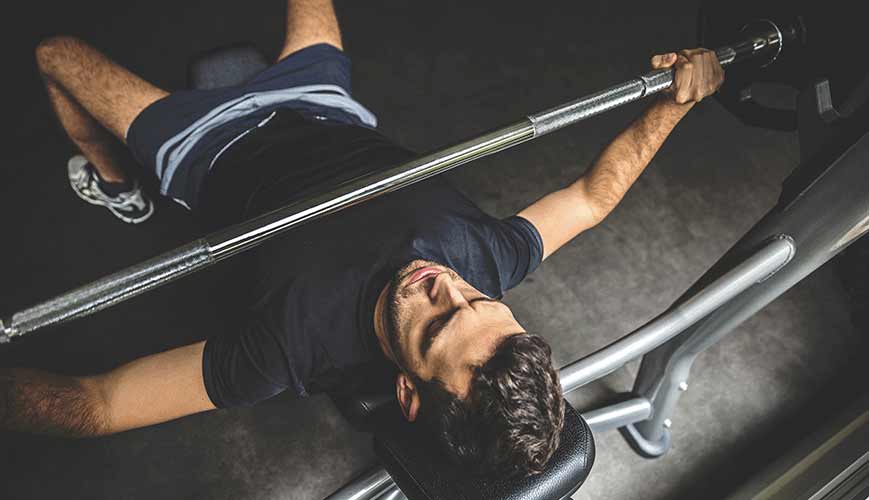The Great Escape: How Gym Rats Stay Injury-Free with Chiropractic
By Martha Michael

The gym is a maze of fitness options. Whether you take a left turn to the weight machines or a right turn toward conditioning classes may not make a difference, but it’s still a good idea to exercise caution because some injuries are common to gym rats.
An article on Active.com describes a number of physical problems associated with exercises and classes at the gym.
Rotator Cuff Injury
This cuff of muscles connects your humerus -- the bone in your upper arm -- with your body’s frame. It resides in a socket where it lifts and rotates your shoulder.
The rotator cuff is made up of four muscles:
- Supraspinatus
- Infraspinatus
- Teres minor
- Subscapularis
These muscles can tear slowly, over time -- it’s not always a single acute trauma that causes an injury forcing you to temporarily sideline your exercise regimen or cost your team’s pitcher his spot in the pitching rotation.
An article in Livestrong points out several exercises that increase your risk of a rotator cuff injury -- many that occur in the gym. If you’re baited by such machines as the bench press or spending time doing chest fly reps, your shoulder could be in trouble.
When using the bench press, don’t lower the bar too far because it adds stress to the shoulder’s joint. When improperly executed, lying on a bench or using a machine can cause a rotator cuff injury.
Pulling weights behind your neck, down to your shoulders, can lead to injuries, so it’s a better idea to pull them down in front of your neck. Also, maintain a stable range of motion, keeping your elbows from dropping below the level of your shoulders.
Pectoral Strain
The large muscle covering your chest is your pectoralis major, which can become torn from excessive weightlifting. The symptoms of a pulled muscle may include a sudden pain in the chest, or in most cases, in front of the armpit.
You can strain your pecs through contact sports such as hockey and wrestling, but you can also pull a chest muscle while bench pressing. Even working out on a treadmill can cause an upper body injury, says an article in the Houston Chronicle. Women are most prone to it because of the extra weight in their chest. When their athletic undergarments aren’t supportive enough, they can strain the Cooper’s ligament in the chest.
Groin Pull
Your adductor muscles are located in your inner thigh and they pull your legs together while stabilizing your hip joint. Straining or tearing your adductor muscles can result from jumping or twisting, which in the gym can come from such activities as boot camp classes or even Zumba.
According to a Healthline article, a groin strain causes a range of symptoms:
- Decrease in strength
- Pain in inner thigh
- Bruises
- Swelling
- Snapping sound when injured
- Chiropractic Treatment
You may have incurred an injury and not have obvious symptoms, which is the advantage to having a routine of chiropractic visits. With a baseline of healthy function, your chiropractor can take notice of changes and diagnose the problem.
Treatments vary according to the injury. For instance, for the rotator cuff, your chiropractor will examine various parts of your shoulder and test your range of motion by repositioning your arms. He or she may also test the strength of the muscles around your shoulder and in your arms to be sure your workout is contributing to your health.
Manual adjustments are a safe, non-invasive treatment for strains, whether you’ve overdone it with weights or jumped into a boot camp class and made some wrong moves. If you’re in pain, stop your fitness routine and call your chiropractor.
You may be tackling a labyrinth of fitness choices, especially if your gym is a supersized establishment. The best injury prevention, particularly if you’re trying some new classes or weight machines, is regular chiropractic care. You get both guidance for winding your way through the exercise options and a safe route to escape the trap of injuries.
The information, including but not limited to, text, graphics, images and other material contained on this page are for informational purposes only. The purpose of this post is to promote broad consumer understanding and knowledge of various health topics, including but not limited to the benefits of chiropractic care, exercise and nutrition. It is not intended to provide or be a substitute for professional medical advice, diagnosis or treatment. Always seek the advice of your chiropractor, physician or other qualified health care provider with any questions you may have regarding a medical condition or treatment and before undertaking a new health care regimen, and never disregard professional medical advice or delay in seeking it because of something you have read on this page.